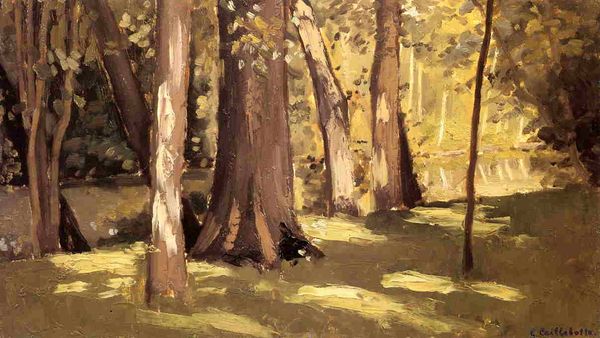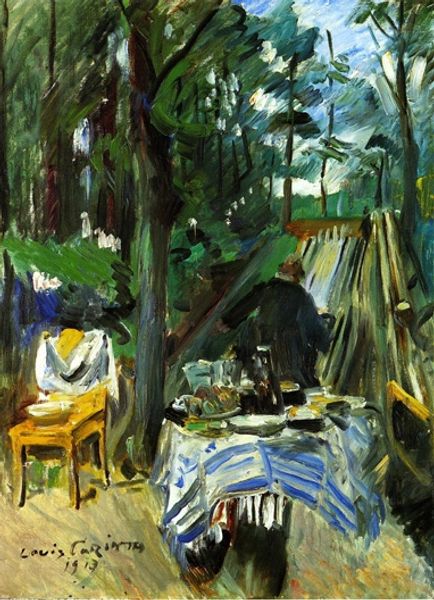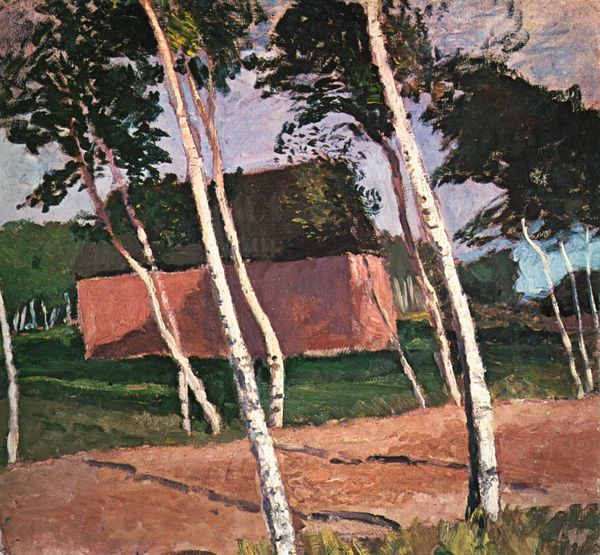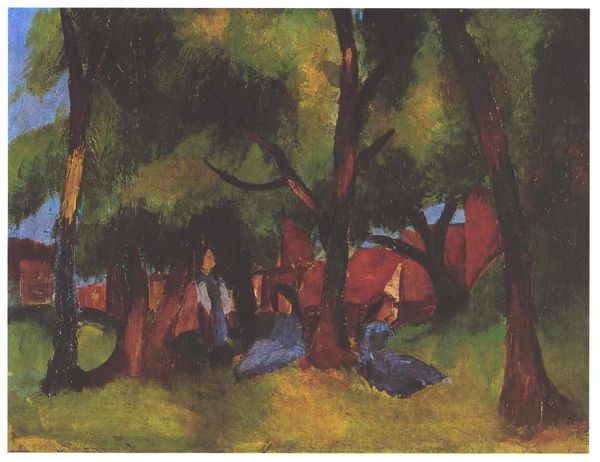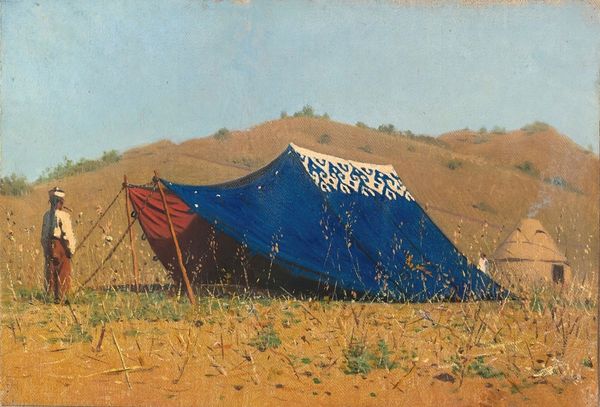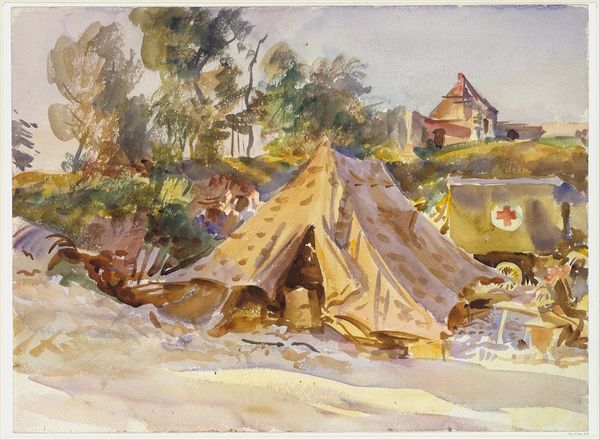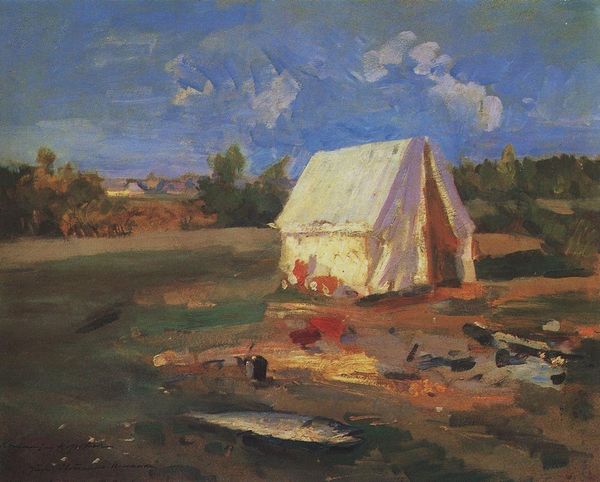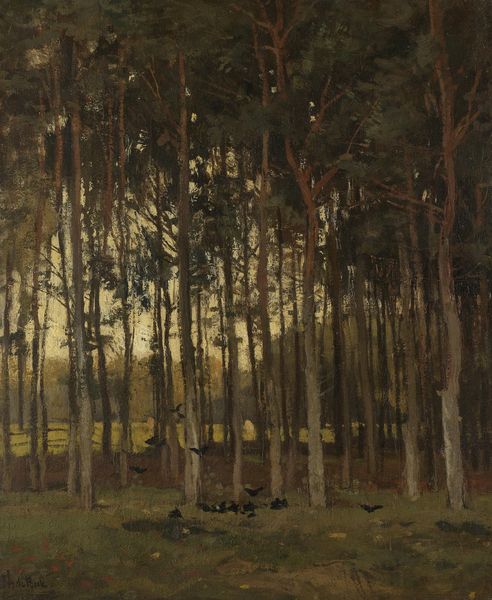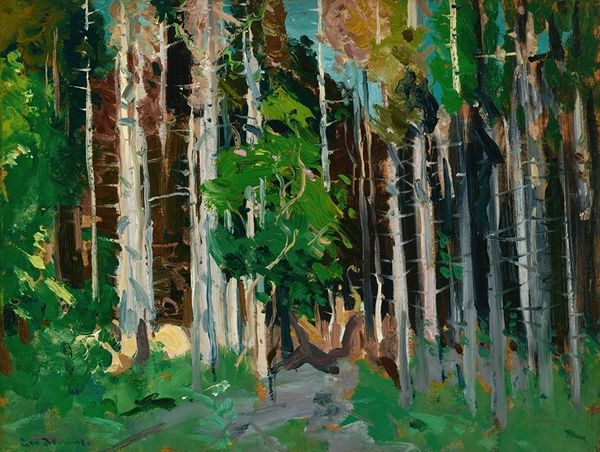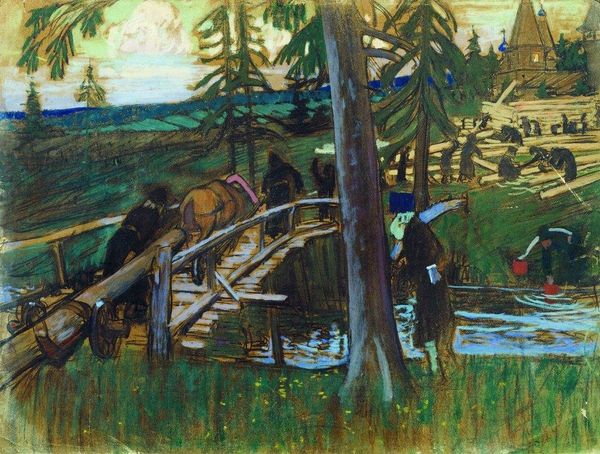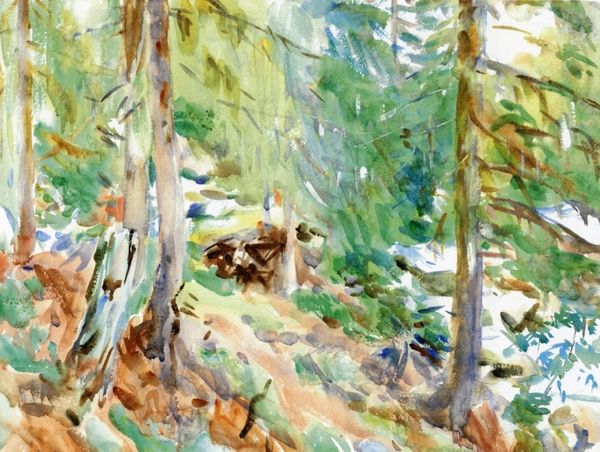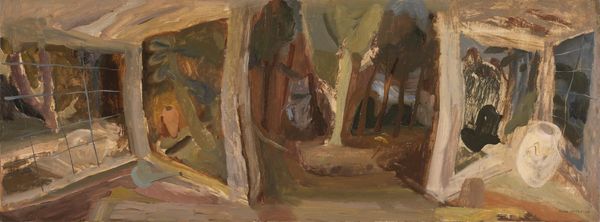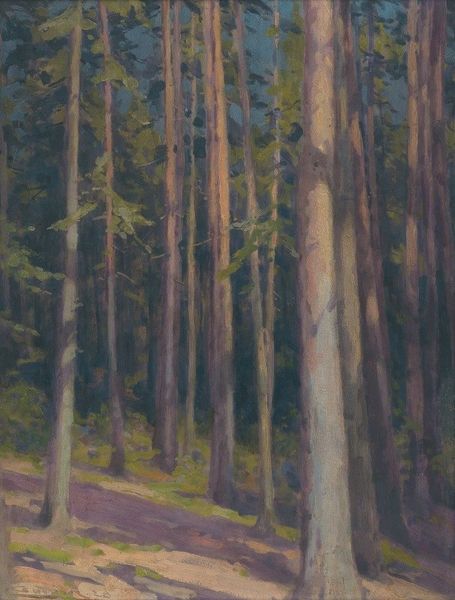
plein-air, oil-paint
#
portrait
#
tree
#
narrative-art
#
plein-air
#
oil-paint
#
landscape
#
oil painting
#
realism
Copyright: Public domain
Curator: Here we have William Orpen's "The Mascot of the Coldstream Guards," painted in 1917. Editor: The first thing that strikes me is the peaceful juxtaposition of what appears to be a military encampment within a rather idyllic woodland setting. It's... unsettling. Curator: Yes, the juxtaposition is powerful. The tents themselves, painted with a realism softened by the plein-air style, become symbols of both shelter and impermanence. Consider the white cloth drying on the line—a momentary act of domesticity in a space of war. It's all about the symbolic weight of mundane objects, wouldn't you say? Editor: Precisely. Look how those everyday details – a pile of hay, a washing line – they subtly normalize the military presence, or at least attempt to. They're anchoring the image to familiar themes of home, even while surrounded by this implied violence and instability of wartime. I find myself wondering about the audience, was this intended for public consumption, or more of a personal record? Curator: It's fascinating to consider. That little goat—ostensibly the mascot—adds another layer of meaning. Historically, animals often represent innocence and purity, a deliberate counterpoint to the brutal reality of war, a hopeful, pastoral image of national protection perhaps? Editor: I can see that, but the goat also stands out for me as an emblem of resilience. Animals survive where humans struggle. I wonder, did it truly comfort those who saw this image originally or only serve as an idealized vision in direct contradiction of their lived experience? I do find that even its muted palette contributes to this sense of cognitive dissonance. Curator: Interesting point. The landscape, painted en plein air, offers a sense of immediacy but also perhaps a longing for a simpler time, one without war. The visual symbolism layered into everyday realism evokes deep emotion. Editor: Exactly, and it speaks to the complicated public narratives around conflict, heroism, and what exactly should be memorialized or omitted from popular memory. Art's political impact is a tricky and shifting territory to navigate. Curator: Indeed. Thank you for that thoughtful look; food for further consideration I believe. Editor: Always happy to stir the pot, my friend!
Comments
No comments
Be the first to comment and join the conversation on the ultimate creative platform.

